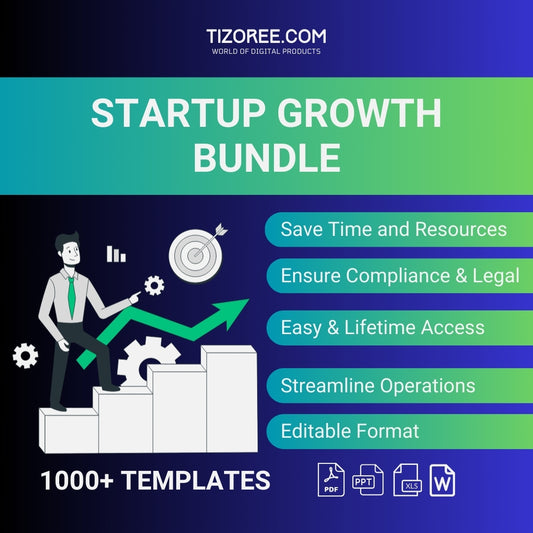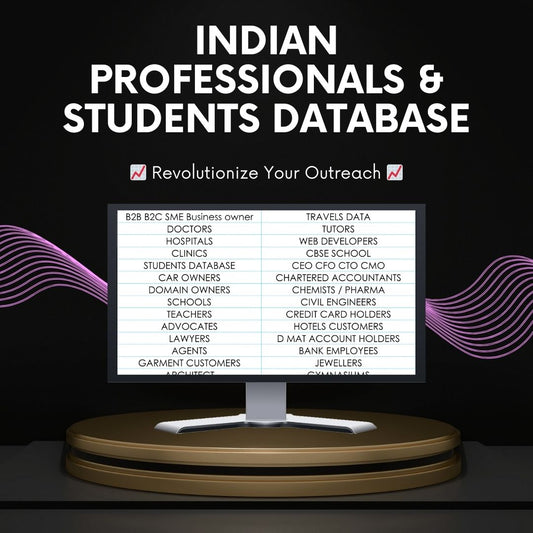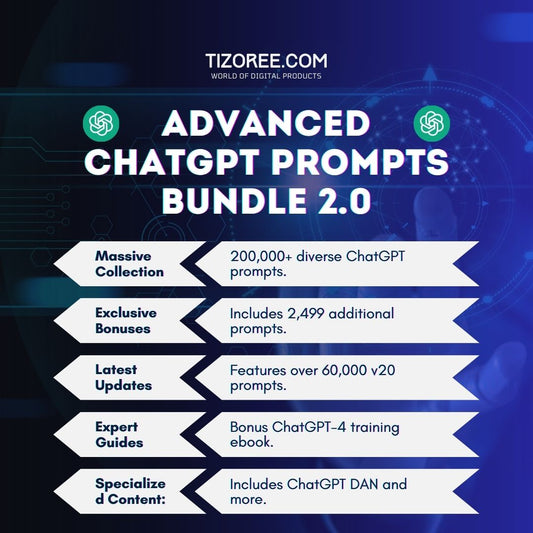மாஸ்டரிங் புரோகிராமாடிக் எஸ்சிஓ: ஒரு தொடக்க வழிகாட்டி
பகிர்
புரோகிராமடிக் எஸ்சிஓ என்பது தேடுபொறி உகப்பாக்கத்திற்கான ஒரு புதுமையான அணுகுமுறையாகும், இது வணிகங்கள் பல இறங்கும் பக்கங்களை திறமையாக உருவாக்க அனுமதிக்கிறது. இந்த வழிகாட்டியானது வேர்ட்பிரஸ் மற்றும் கூகுள் தாள்களைப் பயன்படுத்தி புரோகிராமடிக் எஸ்சிஓவை அமைப்பதற்கான அத்தியாவசிய படிகளை உள்ளடக்கும், இது ஆரம்பநிலையாளர்களுக்கும் அணுகக்கூடியதாக இருக்கும்.
நிரல் எஸ்சிஓவைப் புரிந்துகொள்வது
திட்டவட்டமான எஸ்சிஓ, இலக்கு இறங்கும் பக்கங்களை அளவில் உருவாக்க ஆட்டோமேஷனைப் பயன்படுத்துகிறது. குறிப்பிட்ட முக்கிய வார்த்தைகள் மற்றும் தேடல் நோக்கங்களை பூர்த்தி செய்யும் பல பக்கங்களை உருவாக்குவதன் மூலம், வணிகங்கள் தேடுபொறிகளில் அவற்றின் தெரிவுநிலையை மேம்படுத்தலாம்.
இந்த வழிகாட்டியில், அடிப்படை அமைப்பில் கவனம் செலுத்துவோம், மேலும் மேம்பட்ட பயன்பாடுகளுக்கு அடித்தளத்தை வழங்குகிறது. உங்கள் தகவலை ஆன்லைனில் விரைவாகவும் திறமையாகவும் பெறுவதே குறிக்கோள்.
நிரலாக்க எஸ்சிஓவுடன் தொடங்குதல்
தொழில்நுட்ப அமைப்பில் இறங்குவதற்கு முன், பின்வருவனவற்றை நீங்கள் வைத்திருப்பதை உறுதிசெய்யவும்:
- நீங்கள் நிரலாக்க எஸ்சிஓவை செயல்படுத்த விரும்பும் வேர்ட்பிரஸ் இணையதளம்.
- உங்கள் தரவை ஒழுங்கமைக்க Google Sheets அல்லது Excel கோப்பு.
- விருப்பத்தேர்வு: உள்ளடக்கம் மற்றும் மெட்டாடேட்டாவை உருவாக்க உதவும் ChatGPT.
படி 1: உங்கள் Google தாளைத் தயார் செய்தல்
நிரல் சார்ந்த எஸ்சிஓ அமைப்பதற்கான முதல் படி, உங்கள் தரவை Google தாளில் ஒழுங்கமைப்பதாகும். கட்டமைப்பை எவ்வாறு உருவாக்குவது என்பது இங்கே:
- புதிய Google Sheet அல்லது Excel கோப்பைத் திறக்கவும்.
- முதல் வரிசையில் பின்வரும் தலைப்புகளை உருவாக்கவும்: பக்க தலைப்பு, URL ஸ்லக், மெட்டா தலைப்பு, மெட்டா விளக்கம், உள்ளடக்கம், படம் .
பட நெடுவரிசை விருப்பமானது என்றாலும், அது உங்கள் பக்கங்களை மேம்படுத்தலாம்.
படி 2: தரவு சேகரிப்பு
அடுத்து, உங்கள் பக்கங்களுக்கான தரவைச் சேகரிக்க வேண்டும். உதாரணமாக, நீங்கள் வீட்டுச் சேவைத் தொழில்களை இலக்காகக் கொண்டால், பட்டியலை உருவாக்க ChatGPT ஐப் பயன்படுத்தலாம். "மிகப் பிரபலமான 15 ஹோம் சர்வீஸ் இடங்களை" கேட்கவும்.
உங்கள் பட்டியலைப் பெற்றவுடன், உங்கள் Google தாளை நிரப்பத் தொடங்கலாம். ஒவ்வொரு முக்கிய இடத்திற்கும், தொடர்புடைய பக்க தலைப்பு மற்றும் URL ஸ்லக்கை உருவாக்கவும். இந்த செயல்முறை உங்கள் உள்ளடக்க உருவாக்கத்தை சீராக்க உதவும்.
படி 3: மெட்டாடேட்டாவை உருவாக்குதல்
மெட்டா தலைப்பு மற்றும் மெட்டா விளக்கத்திற்கு , நீங்கள் இதே போன்ற நுட்பங்களைப் பயன்படுத்தலாம். இந்தப் புலங்களில் உங்கள் பக்கத் தலைப்புகளை நகலெடுத்து, அழுத்தமான மெட்டா விளக்கங்களை உருவாக்க ChatGPT ஐப் பயன்படுத்தவும். இது உங்கள் பக்கங்களின் கிளிக்-த்ரூ விகிதங்களை மேம்படுத்த உதவும்.
படி 4: உள்ளடக்கத்தை எழுதுதல்
ஒவ்வொரு பக்கத்திற்கும் தரமான உள்ளடக்கத்தை எழுதுவது முக்கியம். இதற்கு அதிக நேரம் ஆகலாம் என்றாலும், ஆரம்ப வரைவுகளை உருவாக்க நீங்கள் ChatGPTஐப் பயன்படுத்தலாம். உங்கள் தாளின் உள்ளடக்க நெடுவரிசையில் உங்கள் உள்ளடக்கத்தை ஒட்டவும்.
படங்களைச் சேர்க்க நீங்கள் முடிவு செய்தால், அவற்றை உங்கள் வேர்ட்பிரஸ் மீடியா லைப்ரரியில் பதிவேற்றி, அவற்றின் URLகளை பட நெடுவரிசையில் ஒட்டவும்.
WordPress இல் தரவைப் பதிவேற்றுகிறது
உங்கள் Google தாள் தயாரானதும், உங்கள் வேர்ட்பிரஸ் தளத்தில் தரவைப் பதிவேற்றுவதற்கான நேரம் இது. இந்த வழிமுறைகளைப் பின்பற்றவும்:
படி 5: ஒரு செருகுநிரலை நிறுவுதல்
பதிவேற்ற செயல்முறையை எளிதாக்க உங்களுக்கு ஒரு செருகுநிரல் தேவை. பரிந்துரைக்கப்பட்ட சொருகி WP ஆல் இம்போர்ட் ஆகும்.
- உங்கள் வேர்ட்பிரஸ் டாஷ்போர்டுக்குச் செல்லவும்.
- செருகுநிரல்களுக்கு செல்லவும் > புதியதைச் சேர் .
- WP அனைத்து இறக்குமதியைத் தேடவும், நிறுவவும் மற்றும் செயல்படுத்தவும்.
படி 6: உங்கள் தாளை CSV ஆக சேமித்தல்
பதிவேற்றுவதற்கு முன், உங்கள் Google தாளை CSV கோப்பாகச் சேமிக்கவும்:
- கோப்பு > பதிவிறக்கம் > கமாவால் பிரிக்கப்பட்ட மதிப்புகள் (.csv) என்பதைக் கிளிக் செய்யவும்.
படி 7: CSV கோப்பை இறக்குமதி செய்தல்
இப்போது உங்களிடம் CSV கோப்பு உள்ளது, உங்கள் வேர்ட்பிரஸ் டாஷ்போர்டுக்கு திரும்பவும்:
- அனைத்து இறக்குமதி > புதிய இறக்குமதி என்பதற்குச் செல்லவும்.
- நீங்கள் சேமித்த CSV கோப்பைப் பதிவேற்றவும்.
- இடுகைகள் அல்லது பக்கங்களை உருவாக்க வேண்டுமா என்பதைத் தேர்ந்தெடுக்கவும்.
- படி 2 க்கு தொடரவும் என்பதைக் கிளிக் செய்யவும்.
படி 8: உங்கள் தரவை வரைபடமாக்குதல்
இங்கே, உங்கள் CSV கோப்பிலிருந்து தரவை WordPress இல் தொடர்புடைய புலங்களுக்கு வரைபடமாக்க வேண்டும்:
- தலைப்பு புலத்திற்கு பக்க தலைப்பை வரைபடமாக்குங்கள்.
- உள்ளடக்க புலத்திற்கு உள்ளடக்கத்தை வரைபடம்.
- மேப் மெட்டா தலைப்பு மற்றும் மெட்டா விளக்கமும் .
- உங்களிடம் படங்கள் இருந்தால், படத்தின் URL ஐ பொருத்தமான புலத்திற்கு வரைபடமாக்குங்கள்.
மேப்பிங்கை முடித்ததும், உங்கள் பக்கங்கள் எப்படி இருக்கும் என்பதைப் பார்க்க, முன்னோட்டத்தை அழுத்தவும்.
படி 9: இறக்குமதியை இயக்குதல்
எல்லாம் சரியாக இருந்தால், தொடரவும் என்பதை அழுத்தி இறக்குமதியை உறுதிப்படுத்தவும். பக்கங்களின் எண்ணிக்கையைப் பொறுத்து, இதற்கு சிறிது நேரம் ஆகலாம்.
புதிதாக உருவாக்கப்பட்ட பக்கங்களைக் காண உங்கள் வேர்ட்பிரஸ் டாஷ்போர்டில் உள்ள பக்கங்கள் பகுதியைப் புதுப்பிக்கவும்.
உங்கள் பக்கங்களை மதிப்பாய்வு செய்கிறது
இறக்குமதிக்குப் பிறகு, எல்லாப் பக்கங்களிலும் சரியான தலைப்புகள், உள்ளடக்கம் மற்றும் மெட்டாடேட்டா உள்ளனவா என்பதைச் சரிபார்க்கவும். உள்ளடக்கம் நோக்கம் கொண்டதாகத் தோன்றுகிறதா மற்றும் SEO கூறுகள் உள்ளனவா என்பதைச் சரிபார்க்க சில பக்கங்களைத் திறக்கவும்.
அடிப்படைகளுக்கு அப்பாற்பட்டது
இந்த வழிகாட்டி அடிப்படை நிரலாக்க எஸ்சிஓ பற்றிய அடிப்படை புரிதலை வழங்குகிறது. நீங்கள் மிகவும் வசதியாக இருக்கும்போது, மேம்பட்ட நுட்பங்களை ஆராய்வதைக் கவனியுங்கள்:
- Elementor அல்லது பிற பக்க உருவாக்கிகளைப் பயன்படுத்தி டெம்ப்ளேட்களை உருவாக்குதல்.
- மிகவும் சிக்கலான எஸ்சிஓ உத்திகளுடன் உங்கள் பக்கங்களை மேம்படுத்துகிறது.
- உங்கள் Google தாள்களிலிருந்து உள்ளடக்கத்தை தானாக இழுக்க டைனமிக் குறிச்சொற்களைப் பயன்படுத்துதல்.
முடிவுரை
நிரலாக்க எஸ்சிஓ அமைப்பது உங்கள் வலைத்தளத்தின் பார்வை மற்றும் போக்குவரத்தை கணிசமாக மேம்படுத்தும். இந்த வழிகாட்டியைப் பின்பற்றுவதன் மூலம், நெறிப்படுத்தப்பட்ட செயல்முறையைப் பராமரிக்கும் போது, குறிப்பிட்ட முக்கிய வார்த்தைகளுக்கு ஏற்ப பல பக்கங்களை நீங்கள் திறமையாக உருவாக்கலாம். நீங்கள் அனுபவத்தைப் பெறும்போது, மிகவும் அதிநவீன எஸ்சிஓ உத்தியை உருவாக்க இந்த அடித்தளத்தை விரிவாக்கலாம்.
உங்களிடம் ஏதேனும் கேள்விகள் இருந்தால் அல்லது கூடுதல் தெளிவுபடுத்தல் தேவைப்பட்டால், கீழே ஒரு கருத்தை இடுங்கள். மகிழ்ச்சியான மேம்படுத்தல்!



